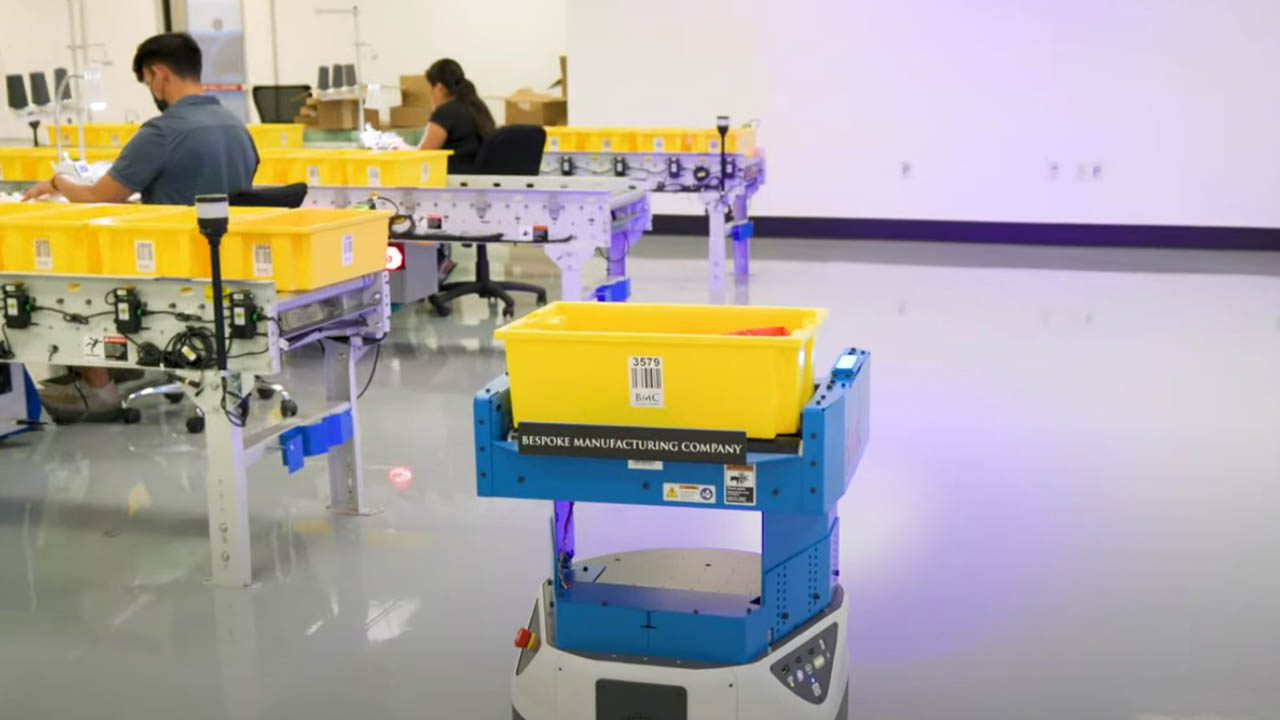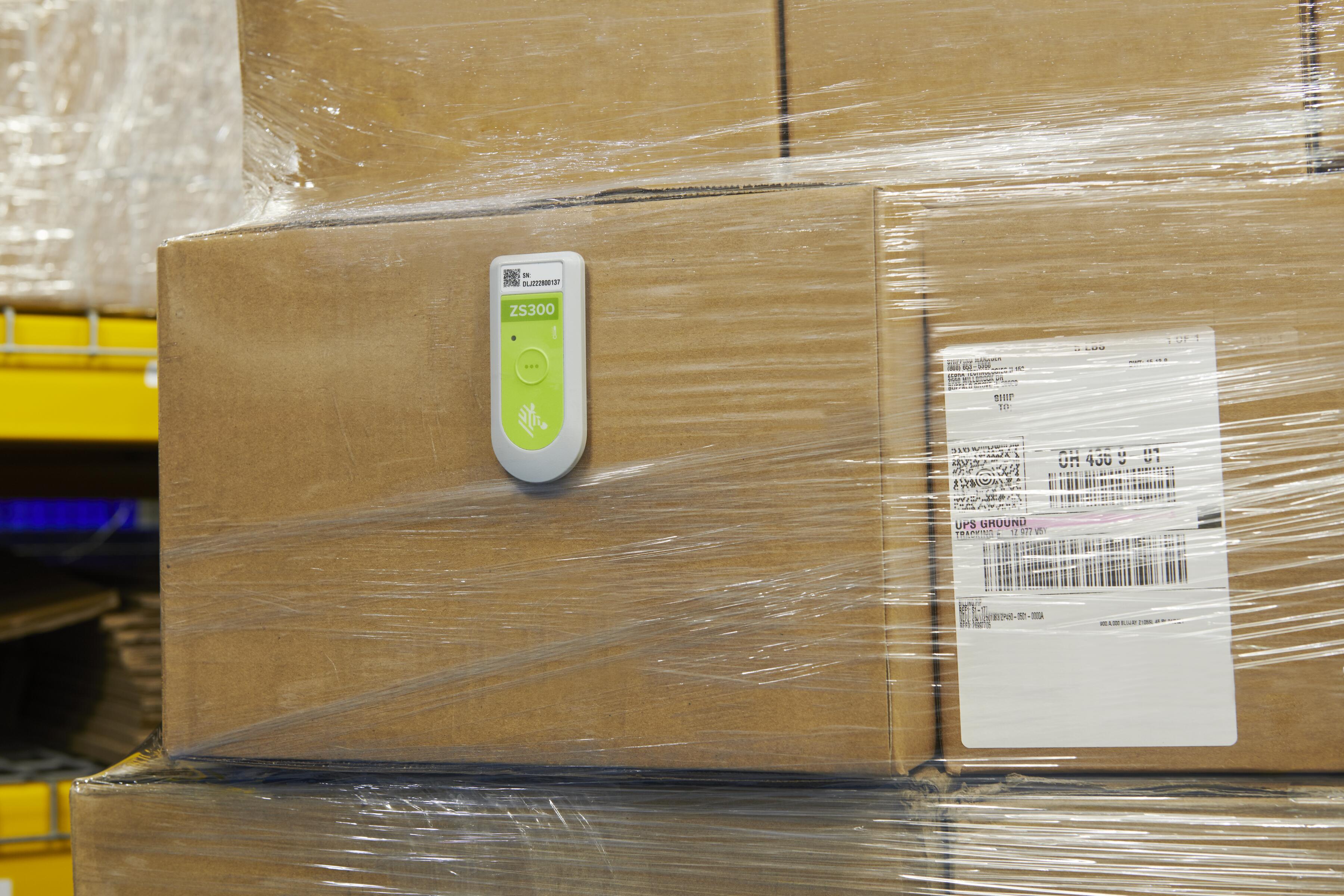Transform retail operations with Zebra’s retail technology solutions, featuring hardware and software for improving inventory management and empowering teams.
Streamline operations with Zebra’s healthcare technology solutions, featuring hardware and software to improve staff collaboration and optimise workflows.
Enhance processes with Zebra’s manufacturing technology solutions, featuring hardware and software for automation, data analysis, and factory connectivity.
Zebra’s transportation and logistics technology solutions feature hardware and software for enhancing route planning, visibility, and automating processes.
Zebra's public sector technology solutions enhance decision-making, streamline operations, and safeguard communities with advanced software and rugged hardware.
Zebra's hospitality technology solutions equip your hotel and restaurant staff to deliver superior customer and guest service through inventory tracking and more.
Zebra's market-leading solutions and products improve customer satisfaction with a lower cost per interaction by keeping service representatives connected with colleagues, customers, management and the tools they use to satisfy customers across the supply chain.
Empower your field workers with purpose-driven mobile technology solutions to help them capture and share critical data in any environment.
Zebra's range of mobile computers equip your workforce with the devices they need from handhelds and tablets to wearables and vehicle-mounted computers.
Zebra's desktop, mobile, industrial, and portable printers for barcode labels, receipts, RFID tags and cards give you smarter ways to track and manage assets.
Zebra's 1D and 2D corded and cordless barcode scanners anticipate any scanning challenge in a variety of environments, whether retail, healthcare, T&L or manufacturing.
Zebra's extensive range of RAIN RFID readers, antennas, and printers give you consistent and accurate tracking.
Choose Zebra's reliable barcode, RFID and card supplies carefully selected to ensure high performance, print quality, durability and readability.
Zebra's rugged tablets and 2-in-1 laptops are thin and lightweight, yet rugged to work wherever you do on familiar and easy-to-use Windows or Android OS.
With Zebra's family of fixed industrial scanners and machine vision technologies, you can tailor your solutions to your environment and applications.
Zebra’s line of kiosks can meet any self-service or digital signage need, from checking prices and stock on an in-aisle store kiosk to fully-featured kiosks that can be deployed on the wall, counter, desktop or floor in a retail store, hotel, airport check-in gate, physician’s office, local government office and more.
Adapt to market shifts, enhance worker productivity and secure long-term growth with AMRs. Deploy, redeploy and optimize autonomous mobile robots with ease.
Discover Zebra’s range of accessories from chargers, communication cables to cases to help you customise your mobile device for optimal efficiency.
Zebra's environmental sensors monitor temperature-sensitive products, offering data insights on environmental conditions across industry applications.
Zebra's location technologies provide real-time tracking for your organisation to better manage and optimise your critical assets and create more efficient workflows.
Enhance frontline operations with Zebra’s AI software solutions, which optimize workflows, streamline processes, and simplify tasks for improved business outcomes.
Empower your frontline with Zebra Companion AI, offering instant, tailored insights and support to streamline operations and enhance productivity.
The everything you need to rapidly and cost effectively develop high-performance AI vision applications on Zebra mobile computers.
Zebra Workcloud, enterprise software solutions boost efficiency, cut costs, improve inventory management, simplify communication and optimize resources.
Keep labour costs low, your talent happy and your organisation compliant. Create an agile operation that can navigate unexpected schedule changes and customer demand to drive sales, satisfy customers and improve your bottom line.
Drive successful enterprise collaboration with prioritized task notifications and improved communication capabilities for easier team collaboration.
Get full visibility of your inventory and automatically pinpoint leaks across all channels.
Reduce uncertainty when you anticipate market volatility. Predict, plan and stay agile to align inventory with shifting demand.
Drive down costs while driving up employee, security, and network performance with software designed to enhance Zebra's wireless infrastructure and mobile solutions.
Explore Zebra’s printer software to integrate, manage and monitor printers easily, maximising IT resources and minimising down time.
Make the most of every stage of your scanning journey from deployment to optimisation. Zebra's barcode scanner software lets you keep devices current and adapt them to your business needs for a stronger ROI across the full lifecycle.
RFID development, demonstration and production software and utilities help you build and manage your RFID deployments more efficiently.
RFID development, demonstration and production software and utilities help you build and manage your RFID deployments more efficiently.
Zebra DNA is the industry’s broadest suite of enterprise software that delivers an ideal experience for all during the entire lifetime of every Zebra device.
Advance your digital transformation and execute your strategic plans with the help of the right location and tracking technology.
Boost warehouse and manufacturing operations with Symmetry, an AMR software for fleet management of Autonomous Mobile Robots and streamlined automation workflows.
The Zebra Aurora suite of machine vision software enables users to solve their track-and-trace, vision inspection and industrial automation needs.
Zebra Aurora Focus brings a new level of simplicity to controlling enterprise-wide manufacturing and logistics automation solutions. With this powerful interface, it’s easy to set up, deploy and run Zebra’s Fixed Industrial Scanners and Machine Vision Smart Cameras, eliminating the need for different tools and reducing training and deployment time.
Aurora Imaging Library™, formerly Matrox Imaging Library, machine-vision software development kit (SDK) has a deep collection of tools for image capture, processing, analysis, annotation, display, and archiving. Code-level customisation starts here.
Aurora Design Assistant™, formerly Matrox Design Assistant, integrated development environment (IDE) is a flowchart-based platform for building machine vision applications, with templates to speed up development and bring solutions online quicker.
Designed for experienced programmers proficient in vision applications, Aurora Vision Library provides the same sophisticated functionality as our Aurora Vision Studio software but presented in programming language.
Aurora Vision Studio, an image processing software for machine & computer vision engineers, allows quick creation, integration & monitoring of powerful OEM vision applications.
Adding innovative tech is critical to your success, but it can be complex and disruptive. Professional Services help you accelerate adoption, and maximise productivity without affecting your workflows, business processes and finances.
Zebra's Managed Service delivers worry-free device management to ensure ultimate uptime for your Zebra Mobile Computers and Printers via dedicated experts.
Find ways you can contact Zebra Technologies’ Support, including Email and Chat, ask a technical question or initiate a Repair Request.
Zebra's Circular Economy Program helps you manage today’s challenges and plan for tomorrow with smart solutions that are good for your budget and the environment.

Industrial Automation Insider: Here’s Proof of What Automation Can Do – and How Flexible Manufacturing Can Be – in the Fashion World
It’s said that “necessity is the mother of innovation,” and Kirby Best knows this better than anyone. When his wife was fighting breast cancer, they couldn’t find comfortable, functional pajamas for her. So, they decided to fashion their own. Through that experience, the pair realized how difficult and expensive it was to produce small batches of custom items, not to mention how unsustainable the fashion industry is from an environmental perspective. (Did you know it takes 1,800 gallons of water to make one pair of jeans?!)
Starting to appreciate what custom fashion designers all over the world go through, Kirby decided to take everything he knew from his 40 years in the publication and manufacturing industries and turn frustration into opportunity. The traditional manufacturing model clearly wasn’t the right model for every industry, nor every customer the industry serves.
So, he founded Bespoke Manufacturing Company (BMC).
At the 30,000-foot level, BMC is a custom fashion manufacturer. Workers print, cut, and sew in a modular, build-to-order production operation. However, if you dive deeper into its business model, you’ll see BMC is far from your typical textile producer. It is an impressively sustainable technology and information company at its core – which is exactly what Kirby hoped it would be when he retreated from the standard manufacturing model and risked it all with a wildly different, yet very smart approach to custom fashion.
Fashion Forward
“Fixed conveyors are not the way of the future,” he told me when we started working together a couple years ago, shortly after he founded BMC. In fact, fixed conveyors really aren’t even the best way to get goods crafted and out the door today – at least not in an industry where small batch orders are the norm. There are a lot of moving parts in custom fashion, and linear motion isn’t always the most efficient way to get things out the door. Plus, there are many design flaws in traditional apparel production models, such as the excessive water use (as I already mentioned), extreme pollution from factories, hard-core human health impact, and all-around waste.
That’s why Kirby did something that no one thought possible and built an environmentally friendly, automated factory (from the ground up) that has people, autonomous mobile robots (AMRs) and advanced scanning and imaging technology working in perfect harmony.
Get this: 40% of the factory – which is the first in a network of factories that Kirby is assembling – is presently equipped with conveyors; the other 60% is powered by AMRs. But very soon, the split will be 20% conveyors/80% AMRs!
Now, you might assume based on his automation ambitions that his goal is to replace human workers…to fully automate production and make it more cost-efficient or speedy. But that is not at all why Kirby’s putting a fleet of robots to work. In fact, the only reason he quit his stable job to start BMC was to help people: his wife, up-and-coming fashion designers, small businesses and front-line manufacturing workers. To be honest, what Kirby has created at his first BMC factory in Arizona – and what he’s planning to replicate through both retrofit and greenfield efforts around the world – is among the most innovative, yet simplest, approaches to automation I’ve ever seen.
In fact, when he and I sat down with my Zebra colleague Cody James to talk about what it has really been like to shake up a centuries-old industry in just a couple years’ time, I was shocked to learn:
how the idea for BMC unfolded
how much Kirby dug in to get this custom fashion model right, and
why he resisted the status quo to ensure his business was a lean, green, human-centric manufacturing machine.
So, tune into our 30-minute conversation now to hear Kirby diverge all the details surrounding the start of this state-of-the-art, on-demand apparel production operation, including…
How his curiosity about pajamas for his wife turned into such a blessing for millions (possibly billions) of people around the world.
The reason why AMRs are the natural way forward for manufacturing – especially if you care about people and this planet as much as the bottom line.
Why he ultimately paired fixed industrial scanning systems with robots (and people) to help ensure customers received a quality product, no matter what they were producing.
How his team has reinvented – and improved – the circular economy model within the fashion industry using a unique automation model compromised of robots and RFID (to the tune of a 70-80% reduction in pollution/waste).
Kirby also goes in-depth about why…
It’s important to know that lab-engineered technology solutions won’t always work right out of the box in the real world. (He also explains what to do when you realize things need to be tweaked, or that you forgot to consider something in the planning phases, and who to bring into the fold to both mitigate and address issues – based on personal experience, of course.)
You must treat business modernization – and manufacturing – as a team sport if you want to score a win. (And why both robots and retirees should be a part of your team.)
He always asks, “Is this scalable?” in both a retrofit and greenfield setting before committing to a technology platform, business process design or workflow model.
It’s so important that we all become more aware of where our clothes come from.
No” means “not yet,” and “not yet” means “yes” is coming…at least in his world.
LISTEN NOW
Want a glimpse into BMC’s operation? Check this out:
Zebra Developer Blog
Zebra Developer BlogZebra Developer Blog
Are you a Zebra Developer? Find more technical discussions on our Developer Portal blog.
Zebra Story Hub
Zebra Story HubZebra Story Hub
Looking for more expert insights? Visit the Zebra Story Hub for more interviews, news, and industry trend analysis.
Search the Blog
Search the BlogSearch the Blog
Use the below link to search all of our blog posts.
Most Recent
Legal Terms of Use Privacy Policy Supply Chain Transparency
ZEBRA and the stylized Zebra head are trademarks of Zebra Technologies Corp., registered in many jurisdictions worldwide. All other trademarks are the property of their respective owners. Note: Some content or images on zebra.com may have been generated in whole or in part by AI. ©2025 Zebra Technologies Corp. and/or its affiliates.




